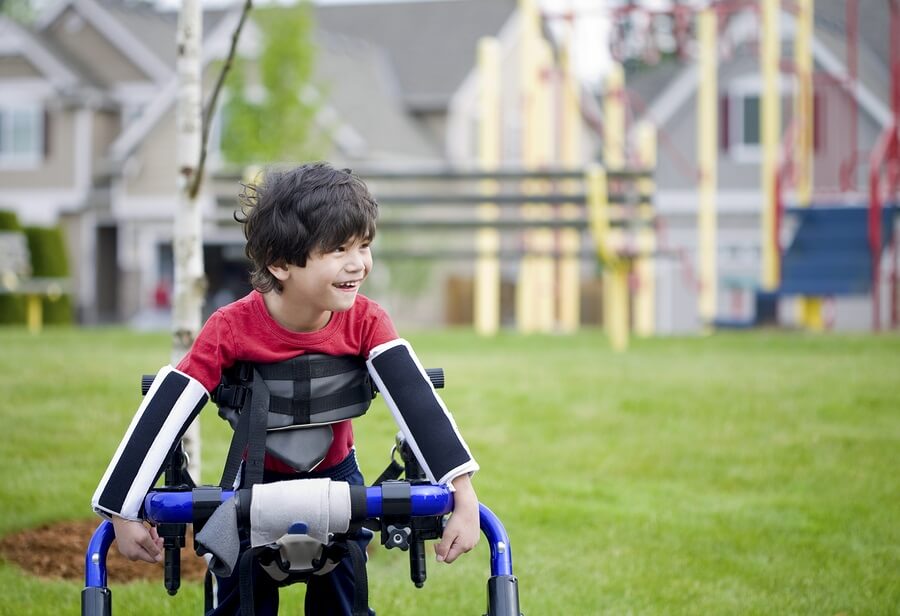

For example, if you see a child with muscular dystrophy in a wheelchair, you can say to your child, “I see you looking at that little girl in the wheelchair, and you might be wondering why she needs it. Some people’s muscles work a little differently, and her wheelchair helps her move around, just like your legs help you.”
Try to keep your explanations positive. For example, explain that hearing aids help others hear and wheelchairs help others move around, instead of using a negative connotation (he can’t hear, she can’t walk, etc.)

This tip sheet from Mobility International USA is a good resource to learn what terminology to use when describing somebody’s disability.

For example, maybe your child and his neighbor who has Down syndrome both love to watch football and go swimming. Perhaps they are the same age, or maybe they both have a pet fish. Talking about similarities will show your child that having a disability does not define a person, much like your child’s physical characteristics don’t define him.

For example, if your child has a hearing-impaired classmate, instead of focusing on the fact that he can’t hear, also ask him what his classmate is good at (math? running?), and then talk to your child about his own strengths and what he finds to be difficult. Help him see that all humans have their own strengths and weaknesses, and that he should help those just as he would want others to help him in areas with which he struggles.

Go over this “Bullying Stops Here” printable pledge, and have your child sign it as a pledge that she won’t bully others, and will try to help if she sees someone else doing it.

It can be tricky when your child sees a service dog in a public place and wants to pet it. In this situation, give her a matter-of-fact explanation for why she can’t. For example, you can simply say “That dog isn’t a pet — his job is to help that person see. He’s working right now, so let’s not distract him.”





